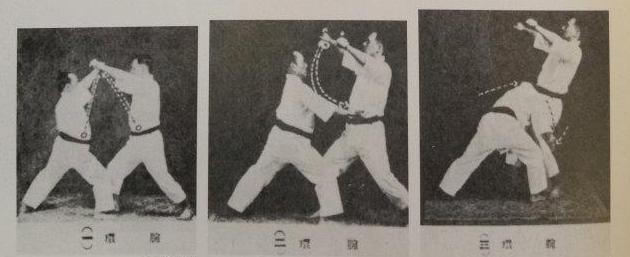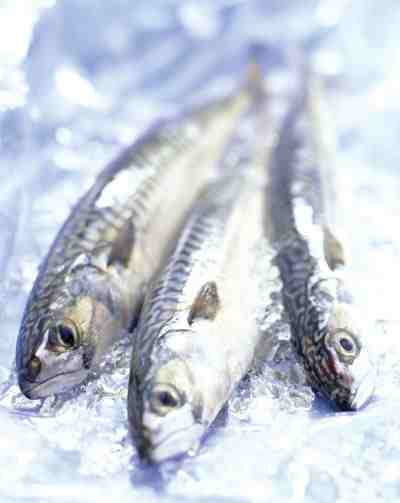The Dalai Lama is on a diet.
So is your mom. And your best friend. And your sensei. And his pet frog.
In fact, everyone you can name is on a diet.
And so are you.
How can I be so sure? Because a “diet” isn’t something you go on and go off of, like, say, a prescription. A diet is what you eat, day in and day out, whether you plan to eat it or not. It’s simply your regular food/drink intake.
The million dollar question, however, is…
What kind of diet are you on?
Did you know that Funakoshi Gichin (the founder of Shotokan Karate), was on a pretty strange diet?

According to his autobiography Karate-Do: My Way of Life, in the summer he only ate hot food and drank hot beverages. Conversely, during the winter, he only ate/drank cold stuff. I guess he thought it was more “natural” or something.
Well, in that case, I like his thinking.
Because, sadly, “natural” is far from how we’re eating these days.
(And before we go any further, no, this post is not about “Karate” per se. It’s about food, eating and being healthy. You’ll thank me later. Or sue me.)
See, nutrition is something I’m pretty interested in moderately obsessed with. I love learning more about how the human body functions, in order to optimize my present and future life (and diet plays a huge part in this). But it’s strange how society today has fooled most of us into blindly following this evil pattern of industrial “food” laid out by evil corporations during hundreds of years on what to eat and how to eat, without really educating us about the options.
I believe every person is fundamentally unique.
I hope you do too.
To make a comparison; we can’t produce a million cheap t-shirts of the same kind and expect them to fit everyone, can we? Of course not. Some people will want a different color, some will need a different size, some will need a different material, some will need a different cut… and some can’t even wear a friggin’ t-shirt at all.
But, for some reason, apparently, everyone should eat the same grains, dairy, sugar, meat and potatoes provided everywhere!
Because that’s how we’ve “always done”.
Screw that. I think we ought to pay more attention to individual differences in how we process, utilize and react to nutrients found in our food. This is so incredibly important. What we mostly eat today is the result of decades of economical calculations, industrial streamlining and clever mass marketing. Not health. Not following our instincts. Believe me, high fructose corn syrup was not what we were made to ingest on a daily basis. Never.
Kind of like the modernization of Karate… one mold that everyone nicely needs to fit into, right? And any “protruding nail” gets swiftly hammered down.
But, as y’all know, I like to break the mold.

Not just for the sake of “breaking the mold” (sometimes the best results might actually be found inside the mold), but for finding the optimal results. No matter where they’re found. Inside or outside of the proverbial box.
Now, I know, I know, I know… I know. I feel ya. You can’t fully control your environment. The system doesn’t allow for that. School, work, restaurants, cafeterias… they don’t always understand that you might actually want to eat healthy. That you don’t accept their cheap cooking oils, their plastic ham and fake cheese. That you want to be in control of your own health, and make your own choices. That you want to shape your own life. So, today I thought I would help you by giving you a couple of simple things to just think about when it comes to your eating habits. Four things, actually. Nothing radical, just a couple of pointers, or tips, that I strongly recommend you to consider when eating stuff.
The goal?
To simply maximize your chances of having the optimal nutritional intake that your body deserves.
And, to fight the powah. Mess with the system. Be a health rebel. Be annoying.
Sounds good?
Great.
Then think about this:
#1: Omega-6 vs. Omega 3
Omega-6 and omega-3. Heard about these before? They are essential fatty acids (meaning we cannot make them on our own and have to obtain them from our diet) which aid in maintaining certain functions of your body in order to keep you healthy. However, while both are fatty acids, each one has a different role in keeping your body performing at its absolute best.
The thing is, they need to be balanced.
Few people know this.
See, the body constructs hormones from these fatty acids. And in general, hormones derived from these two classes of essential fatty acids have opposite effect. Those from omega-6 fatty acids tend to increase inflammation in the body (acne, anyone?), blood clotting, and cell proliferation, while those from omega-3 fatty acids decrease those functions.
Thus, both families of hormones must be in balance to always maintain optimum health.
Sounds simple enough? Think again.
The problem is that sources of omega-6 fatty acids are super many in the average modern diet, while omega-3 sources are comparatively few.
For instance, an abundance of omega-6 is found in most seeds and nuts and the oils extracted from them. Refined vegetable oils, such as soy oil, for example, are used in most of the snack foods, cookies, crackers, and sweets we consume… as well as in most fast food. Soybean oil alone is now so ubiquitous in fast foods and processed foods that an astounding 20 percent of the calories in the American diet are estimated to come from this single source. Yuck.
So here’s the deal:
You need to balance your omega-6 and omega-3.
Like, today.
Many nutrition experts believe that before we relied so heavily on processed foods (back when we were still natural, and kind to our bodies) humans consumed omega-3 and omega-6 fatty acids in roughly equal amounts.
1:1.
But to great detriment, most people now get far too much of omega-6 and not enough omega-3. This dietary imbalance between omega-3 and omega-6 fatty acids may explain the rise of such diseases as asthma, coronary heart disease, many forms of cancer, autoimmunity and neurodegenerative diseases, as well as contributions to obesity, depression, dyslexia and hyperactivity. Serious stuff, in other words!
So, my advice is to cut down on omega-6 levels by reducing consumption of processed/fast foods and polyunsaturated vegetable oils (corn, sunflower, safflower, soy, and cottonseed, for example). At home, use extra virgin olive oil (preferably cold), coconut oil or plain ol’ butter for cooking. They’re much better.
Then, increase omega-3 intake. Eat more oily fish or take fish oil supplements, or perhaps omega-3 fortified eggs? The normal recommendation is consuming two 4- to 6-ounce servings of oily fish a week. Salmon, tuna, herring, mackerel, and trout are awesome. As a bonus, research suggest you’ll greatly improve cognitive functions and actually become a bit smarter!
So ditch the omega-6 and increase omega-3 to get that perfect balance.
I mean, why the heck not?!
#2: Mix Colors Like Crazy
Mother nature is thrifty. So, so clever.
She made plants, vegetables and fruits with several different colors.
These colors serve multiple roles in plants in addition to attracting animals (including us), such as protecting from UV damage, dampening the effects of excess light, enabling photosynthesis, and even acting as endogenous antioxidants (plants can’t really pop vitamin pills, after all).

Luckily, it appears that we humans can leverage many of these pigments for our own gain by eating brightly colored fruits and vegetables.
So eat a wide variety of colorful fruits and vegetables.
The more the merrier. There are hundreds of different bioactive plant pigments, each with unique effects (three of those explained below). So, rather than isolate just one or two, by eating a variety of colorful plants we ensure consumption of a wide range of potentially health-promoting plant pigments.
Three examples:
- Need anthocyanins? Anthocyanins are flavonoids, the most common type of polyphenol, which interacts with your body at the cellular level to produce beneficial antioxidant and/or hormetic effects. Pretty much any fruit, vegetable, or flower with a significant amount of purple or blue gets that color from anthocyanins. Even some reds can be anthocyanin-based. The deeper the color, the more awesome the anthocyanins!
- Need carotenoids? Carotenids are pigments that provide the orange, yellow, and red colors found in foods like carrots, sweet potatoes, cantaloupes, bell peppers, squash, watermelon and tomatoes. This is awesome for vitamin A and our eye-sight, as well as our skin.
- Need betalains? Betalain pigments are described as “deep red” and “purple” (sound similar to the anthocyanin family, but they’re different). Found in beets (where “betalain” gets its name), rhubarb, and the stems of chard, for example. Betalain is awesome, and protects against prostate and breast cancer, among much more.
Conclusion?
Mix colorful fruits and vegetables to get maximum nutritional awesomeness!
As an added bonus, your meals will also look nicer too, which should never be underestimated. Eating is a much more rewarding experience if your food is as sweet for your eye as for your tooth. Sure, you might feel like a rabbit. But rabbits are cool.
Something to consider.
#3: Timing Is Everything
You know what makes me sad?
When I see people training hard for hours without fueling their body.![]()
People, listen up: You need to eat, and/or drink real stuff before and after intense training. Preferably both carbs and protein.
Why before? To have energy.
Why after? To restore energy.
It’s so, so, simple. High-intensity physical training is a catabolic process, which means that if you don’t have those carbs (glycogen) stored up in your muscles, your poor muscles will soon go “Dude, seriously, we have no friggin energy, let’s sacrifice ourselves in order to survive!” and so you’re breaking down your muscles… fool! And for those of you who are trying to gain some muscle, this is especially important after training. Eating a quick meal containing protein and carbs immediately post-workout takes advantage of a specific period of time in which the muscles are particularly insulin sensitive. Meaning, we can “fly” nutrients into the muscle “under the radar” via a mechanism called “non insulin mediated glucose transport”. So get that energy/protein bar (or preferably a shake) going, my friend!
Said another way, you recover from exertion faster if you re-fuel your body immediately after intense exercise.
As well as before.
Or face the consequences…
Timing is everything!
#4: Inflammatory vs. Anti-inflammatory
When we consume foods that our body does not naturally tolerate well, we put our body in an inflammatory state – putting stress on the body’s organs. Ever felt like your digestion is a bit “sluggish”? Ever felt a bit “swollen”, perhaps? Probably because you’re eating substances that the body does not even recognize as proper “food”!
 Result: inflammation.
Result: inflammation.
According to statistics from the World Health Organization, about 12.9 million people worldwide died from some cardiovascular disease a couple of years ago. And each year, the World Cancer Research Fund estimates that some eight million people die from cancer. Heart disease and cancer, the deadly manifestation of chronic inflammation, are expected to remain as the leading causes of death in developed countries for many years to come. You’d better beware.
So, what to do?
Simple.
Avoid inflammatory food.
And consume more anti-inflammatory food.
In other words, try to eat less of:
- Sugars (candy, soda, soft drinks etc.)
- Common cooking oils (omega-6, remember?)
- Trans fatty acids (deep fried foods, commercial baked goods etc.)
- Dairy products (milk, cheese etc.)
- Red meat and processed meat (ham, pork, sausages etc.)
- Alcohol (beer, cider, liquor etc.)
- Refined grains (white bread, white flour, noodles, pastries etc.)
Sounds hard? It is. The (Western) world is literally drowning in these things, and most of them are even considered delicious! But fact remains: the above list of “foods” severely aggravates inflammation in the body. We were never made to eat them as we do today. We’ve been fooled.
Instead, eat more of:
- Vegetables (broccoli, spinach, tomato, kale etc.)
- Fruits (apples, lemon, lime, berries, pineapple, passion fruit etc.)
- Herbs and spices (cinnamon, chili, turmeric, cocoa, ginger etc.)
- Nuts and seeds (almonds, walnuts, flaxseeds etc.)
- Fish (salmon, sardine, tuna, herring etc.)
- Good oils (extra virgin olive oil, macadamia oil etc.)
- Tea (green tea, white tea etc.)
Anti-inflammatory foods like these should be incorporated into your regular diet (that means daily), as they will help bring a balance to inflammational responses in your body and make you awesome.
Stop feeling bloated. Stop having aching joints.
Stop becoming sick.
________________
Wrapping up: At the end of the day, these four points above are really easy to theoretically comprehend for any adult, but a bit hard for most people to actually follow on a day-to-day basis. “I can’t, my boss/wife won’t let me, it’s too hard or expensive, I don’t have time to think” yadda yadda. You know the drill.
Sure.
Fine.
That’s all right.
My goal with this article was just to inform you that a couple of simple tweaks to your diet can totally change your life. And last time I checked, Karate was more than just mere “punching and kicking” to you. It was a lifestyle. A choice. Literally a “way” of life. I bet it still is.
So why wouldn’t you want to take care of that?
My work here is done.
Now go be healthy.



26 Comments